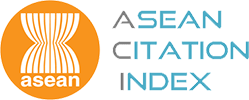Estimating Cost Savings through Adoption of the Best-Practice Technique: Evidence from the Malaysian Manufacturing Sector
Abstract
By using the input-output approach, this article attempts to estimate costs of production by using the 1978 vintage and best-practiced techniques, based on the vintage hypothesis that as time progresses and price rises, adopting the best-practice technique will give more cost saving and use less amount of inputs for each unit of output produced, rather than the old techniques. This paper has identified three component production costs of vintage technology, domestic materials, imported input, and labour. It was found that costs of production for the best-practice technique are less than those of the older one (vintage), supporting the vintage hypothesis. Thus, there is a strong argument for the economy to adopt the best-practice technique because it is absolutely a considerable advantage in terms of saving in the per unit cost of production.
Additional Files
Published
28-12-2007
How to Cite
Abdullah Chik, N., Abdul Rashid, Z., & Saari, M. Y. (2007). Estimating Cost Savings through Adoption of the Best-Practice Technique: Evidence from the Malaysian Manufacturing Sector. International Journal of Management Studies, 14(2), 1–16. Retrieved from https://e-journal.uum.edu.my/index.php/ijms/article/view/9841
Issue
Section
Articles












